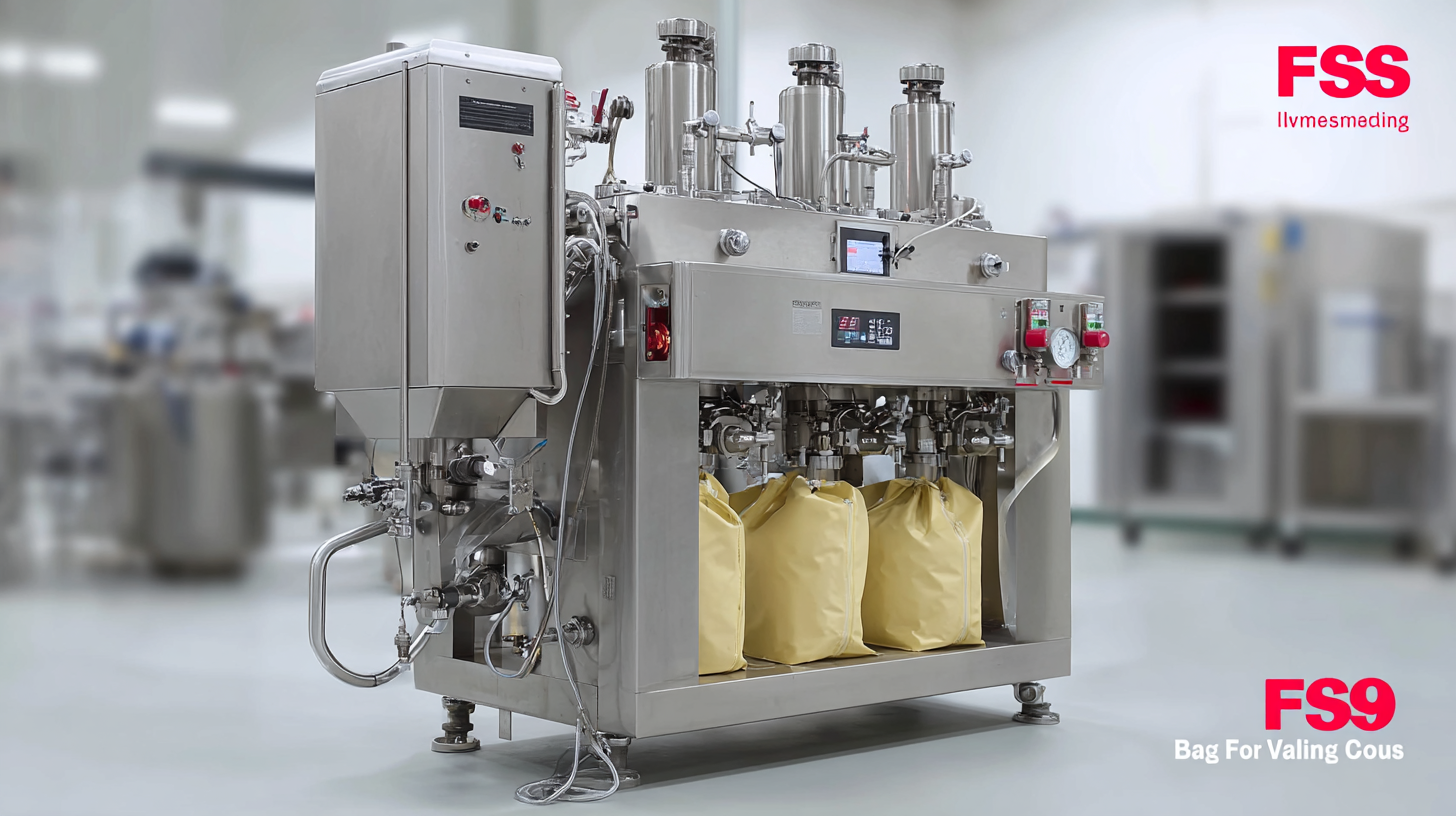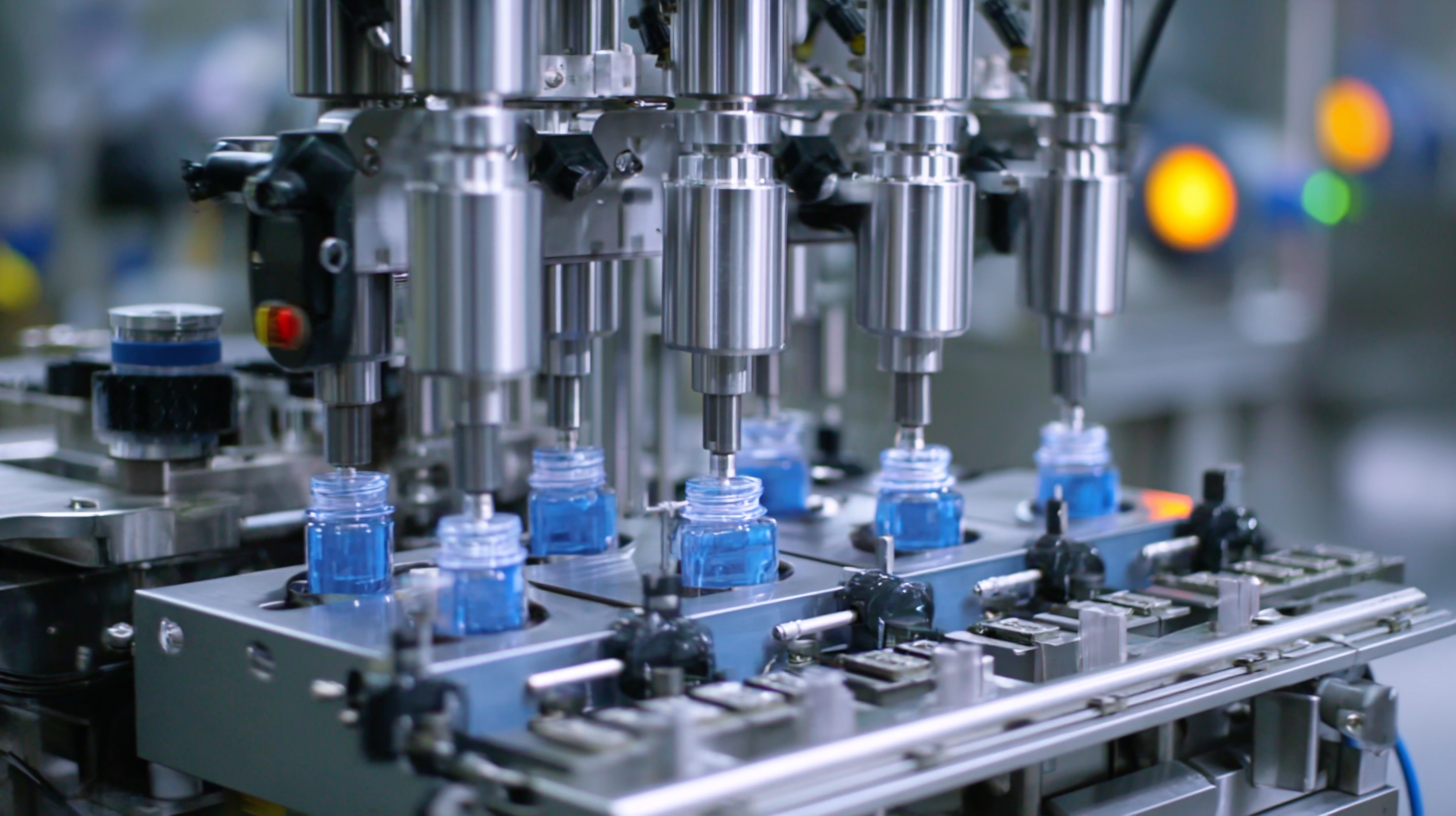
In today's fast-paced industrial landscape, selecting the right equipment for your packaging needs is crucial for maintaining efficiency and product quality. Among the various options available, a bag on valve filling machine stands out as an innovative solution for companies looking to enhance their packaging processes.

This guide aims to provide a comprehensive overview of how to choose the best bag on valve filling machine tailored to your specific business requirements. We will explore different examples of machines, their functionalities, and the key features to consider, ensuring that you make an informed decision that aligns with your operational goals. Whether you are a small startup or a large-scale manufacturer, understanding the nuances of bag on valve filling technology will empower you to boost productivity while delivering exceptional value to your customers.
As the packaging industry evolves, understanding the impact of market trends is essential for selecting the right bag filling machinery for your business. With the global plastic processing machinery market anticipated to surge from $23.57 billion in 2025 to $34.62 billion by 2032, boasting a CAGR of 5.6%, it’s clear that businesses must keep pace with these changes. The rising demand for sustainable packaging solutions is not only reshaping the materials used but also driving the innovations in machinery designed to handle diverse bagging processes.

Furthermore, sectors such as liquid filling and food packaging are projected to experience significant growth. The liquid filling machine market is expected to grow from $6.82 billion in 2025 to $10.39 billion by 2032, with a CAGR of 6.2%. Similarly, the food packaging machine market is forecasted to expand at an impressive CAGR of over 7.3% during the same period. These trends highlight the urgent need for businesses to adapt their machinery selections to not only meet current consumer expectations but also to leverage technological advancements in packaging that enhance efficiency and sustainability. Investing wisely in bag filling technology aligns with market demands and sets a foundation for future success in a competitive landscape.
When selecting the right bag on valve filling machine for your business, understanding key specifications is crucial to ensure optimal valve filling performance. One of the most important factors to consider is the machine’s filling accuracy. Precision in filling not only minimizes waste but also enhances product consistency, which is essential for maintaining quality standards. Look for machines equipped with advanced control systems that can adjust filling volumes based on real-time data, allowing for greater efficiency and productivity.
Another significant specification to evaluate is the material compatibility of the filling machine. Depending on the nature of your products, the machine materials should be resistant to corrosion or degradation. Stainless steel construction is often preferred for its durability and ease of cleaning. Additionally, consider features such as adjustable filling speed and the ability to handle various bag sizes and types. These attributes can greatly influence the flexibility and scalability of your operations, ensuring that your filling processes are adaptable to changing market demands.
| Specification | Details |
|---|---|
| Filling Accuracy | ± 0.5% of the standard |
| Filling Speed | Up to 30 bags per minute |
| Bag Size Compatibility | 100 - 5000 ml |
| Material Type | Plastic, Paper, and Laminated Bags |
| Control System | Touchscreen PLC Control |
| Power Supply | 220V / 380V, 50/60Hz |
| Weight | Approx. 500 kg |
| Dimensions (L x W x H) | 3500 mm x 2000 mm x 2200 mm |
When selecting a valve filling machine for your business, it's essential to understand the various types and features available on the market today. Recent trends indicate a rising demand for versatility and hygiene in filling equipment, particularly for the beverage industry.
Machines are increasingly designed with modular setups, allowing businesses to customize their systems based on specific operational needs. This modular approach not only enhances efficiency but also prolongs the equipment's lifespan, making it a future-proof investment.
In addition to versatility, the focus on sanitation has never been more critical, particularly given the recent spikes in food and beverage recalls. Many modern filling machines are engineered with hygienic designs, ensuring the highest standards of cleanliness during the filling process.
Whether it's for still or carbonated beverages, employing machine technology that prioritizes both efficiency and sanitary conditions can significantly impact product quality and consumer safety, ultimately influencing the overall success of a business.
The bag filling technology industry is on the cusp of significant advancements that are poised to reshape its landscape by 2025. As industries increasingly prioritize sustainability and efficiency, innovations in no-empty packaging solutions are becoming more prevalent. The estimated market size for these solutions is projected to reach $6.38 billion by 2025, with a robust compound annual growth rate of 5.20% anticipated through to 2032. Such growth reflects the industry's pivot towards environmentally friendly packaging options that not only reduce waste but also maximize filling efficiency.

Moreover, the laundry detergent market is also seeing significant growth, with projections suggesting a size of $5.78 billion by 2025. The anticipated CAGR of 3.1% to reach $7.38 billion by 2033 indicates a booming demand for innovative packaging technologies that align with consumer preferences for convenience and sustainability. As businesses explore modern filling machines that accommodate these evolving packaging trends, the focus will be on enhancing productivity while ensuring that the environmental impact is minimized. This convergence of market demands and technological innovation heralds a promising future for bag filling machines as they adapt to meet the needs of a rapidly changing landscape.
Investing in advanced valve filling solutions can significantly enhance your production efficiency and product quality. Conducting a cost-benefit assessment is crucial for businesses looking to upgrade their filling machines. On the one hand, the initial investment might seem high, but the long-term benefits can outweigh these costs. Improved accuracy in filling means reduced waste and increased product consistency, which not only satisfies customer expectations but also fosters brand loyalty.
Moreover, advanced valve filling machines often come equipped with modern technology that streamlines operations and minimizes downtime. This can lead to considerable savings in labor costs and increased output. When you factor in the potential for lower rejection rates and decreased raw material consumption, the financial advantages become clear. Understanding these elements will help you make an informed decision, ensuring that your investment not only meets current demands but also positions your business for future growth and competitiveness in the market.
This chart illustrates the upfront cost versus potential savings in labor and materials when investing in advanced valve filling machines. The data is based on industry averages for small to medium-sized businesses.
